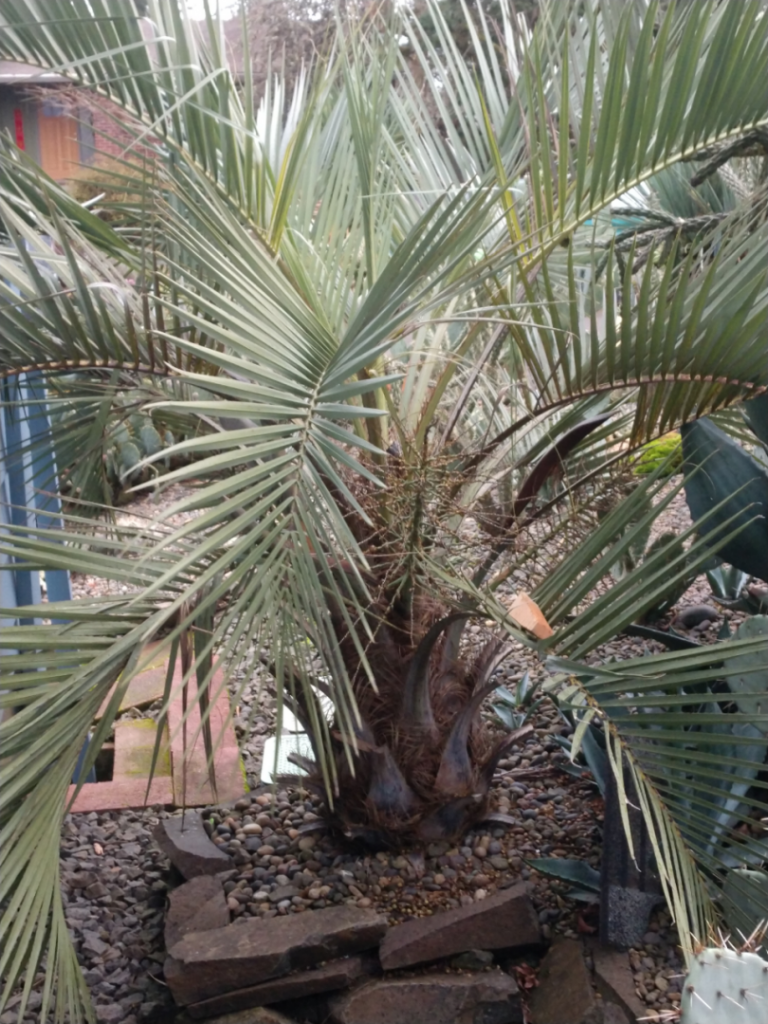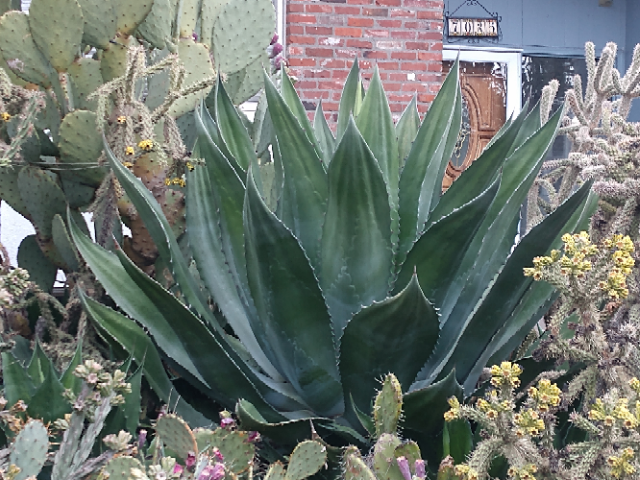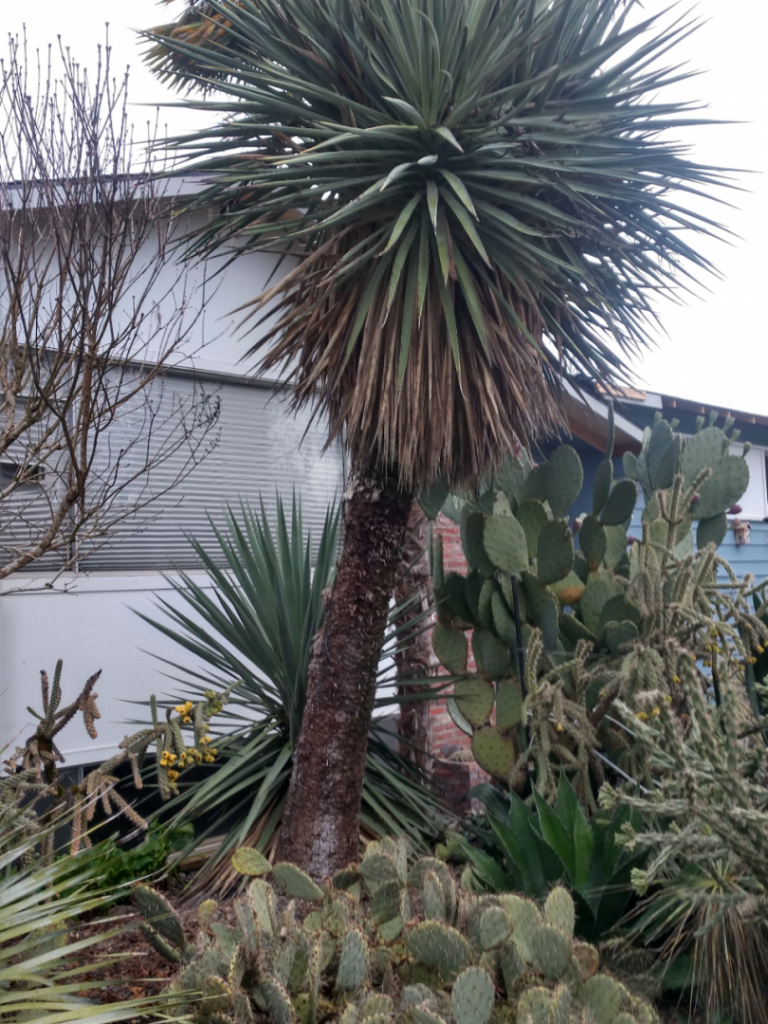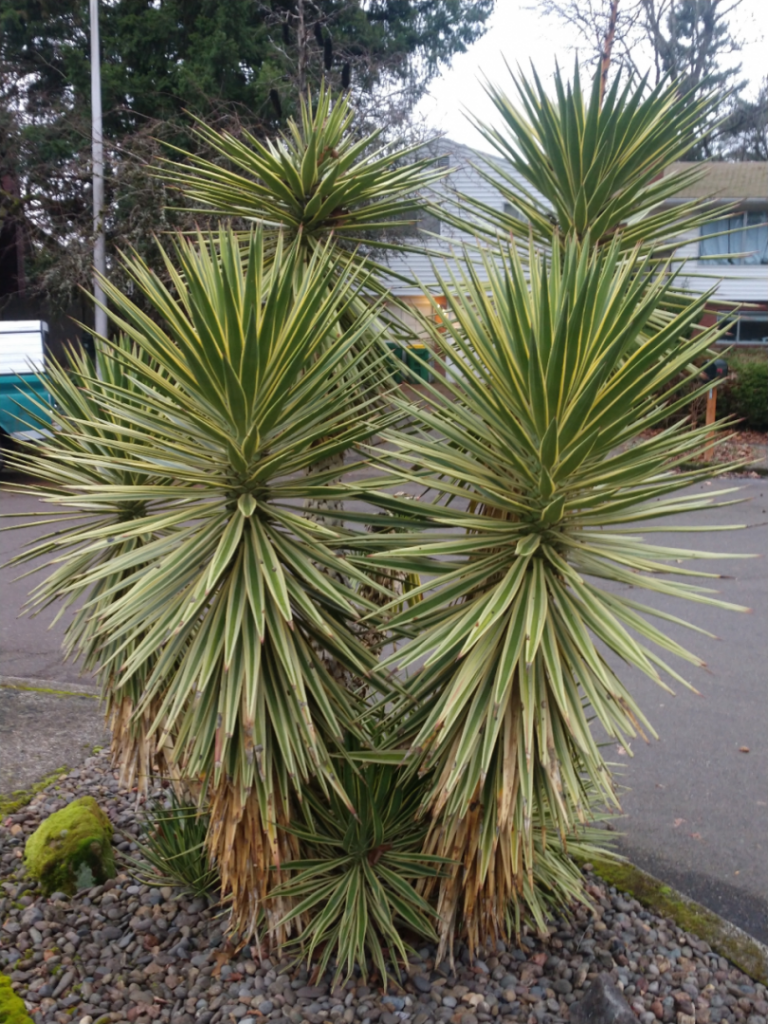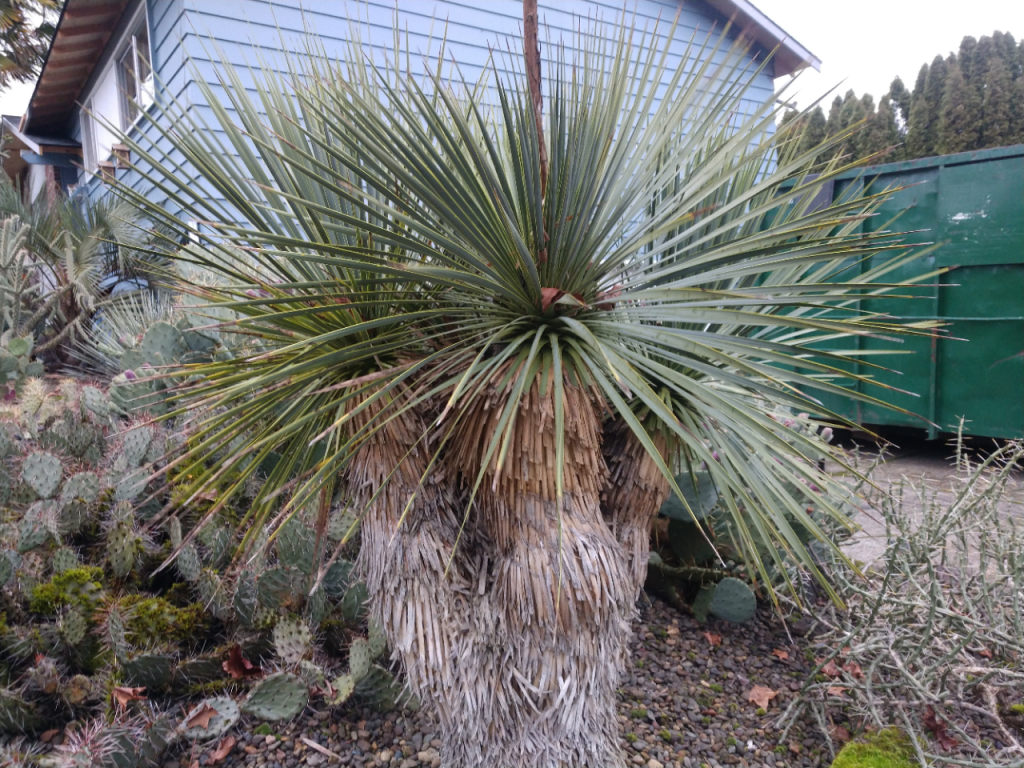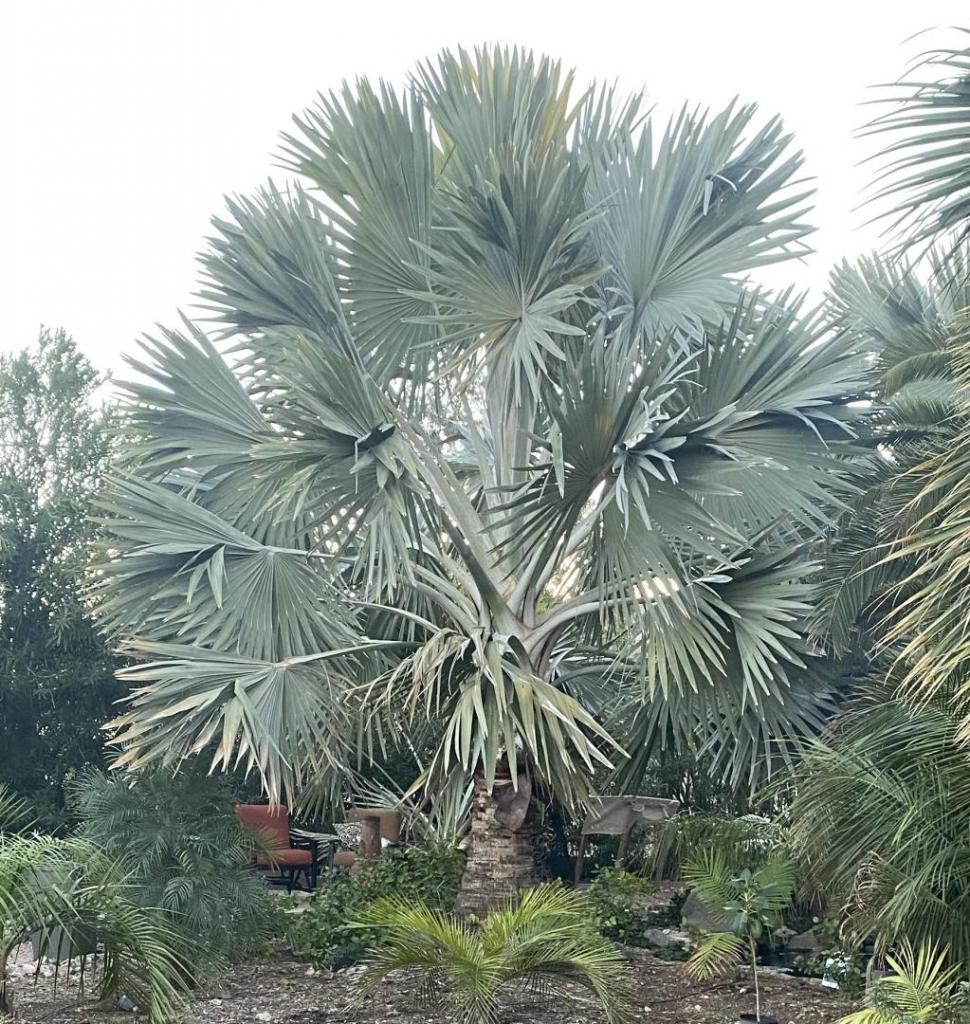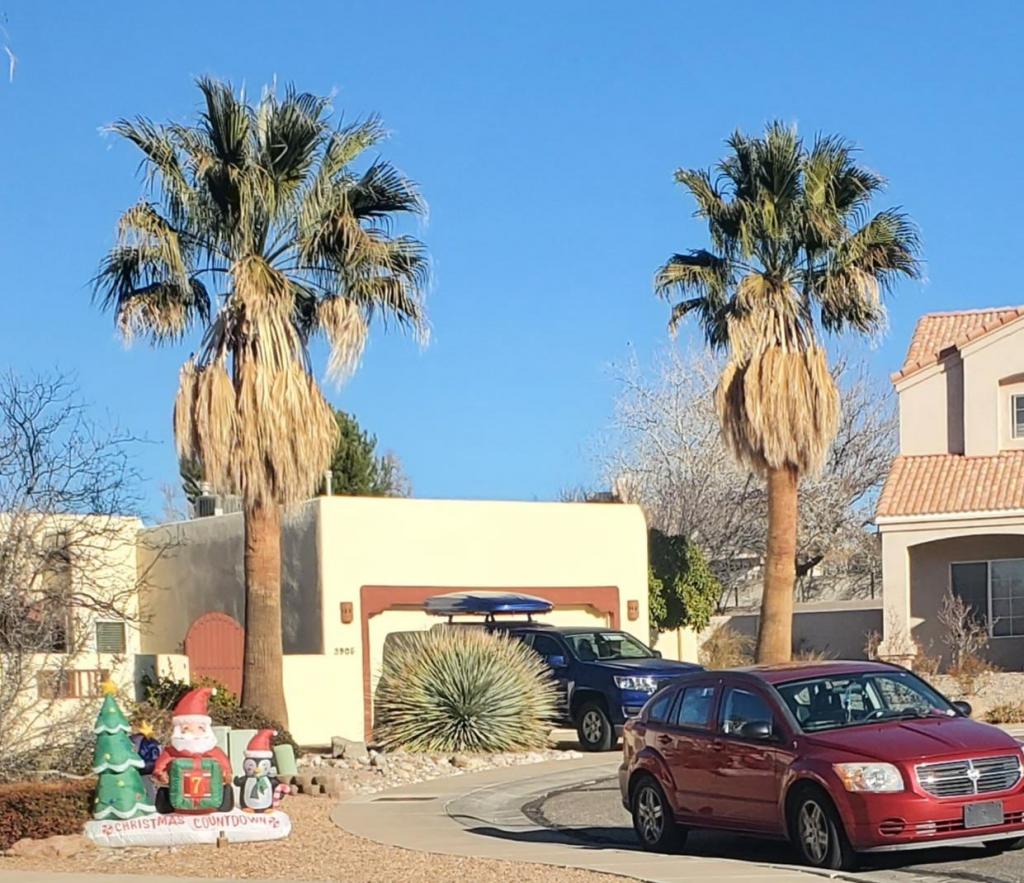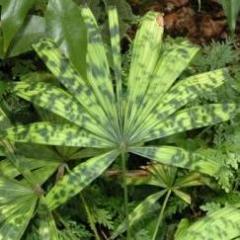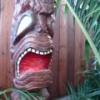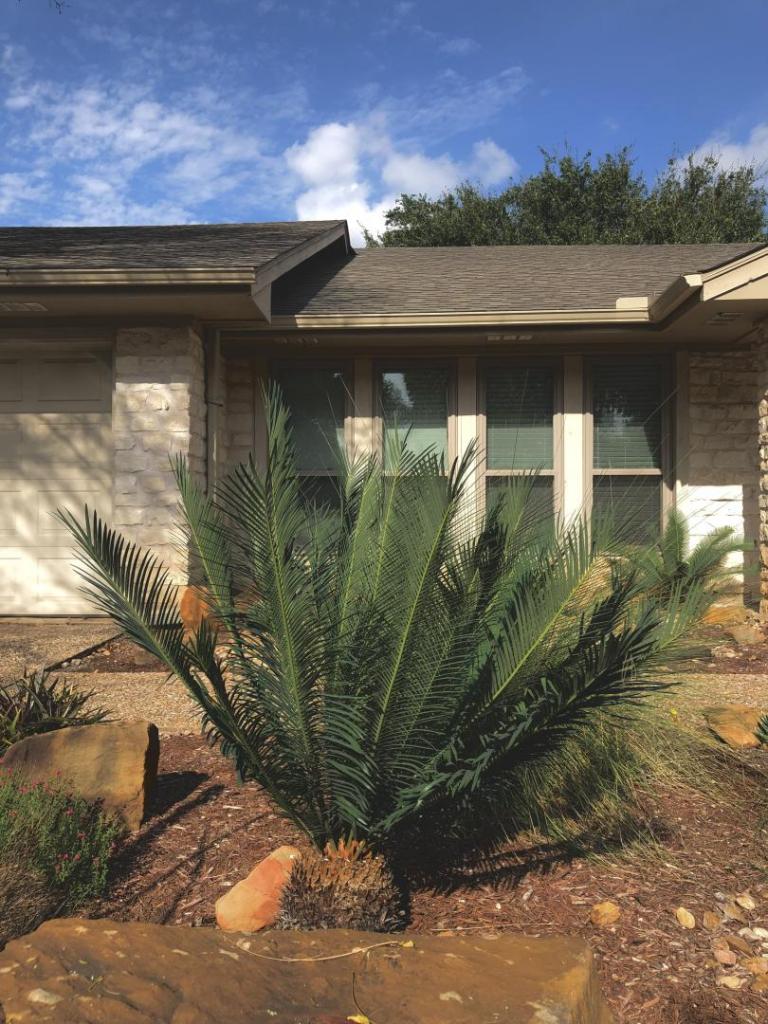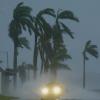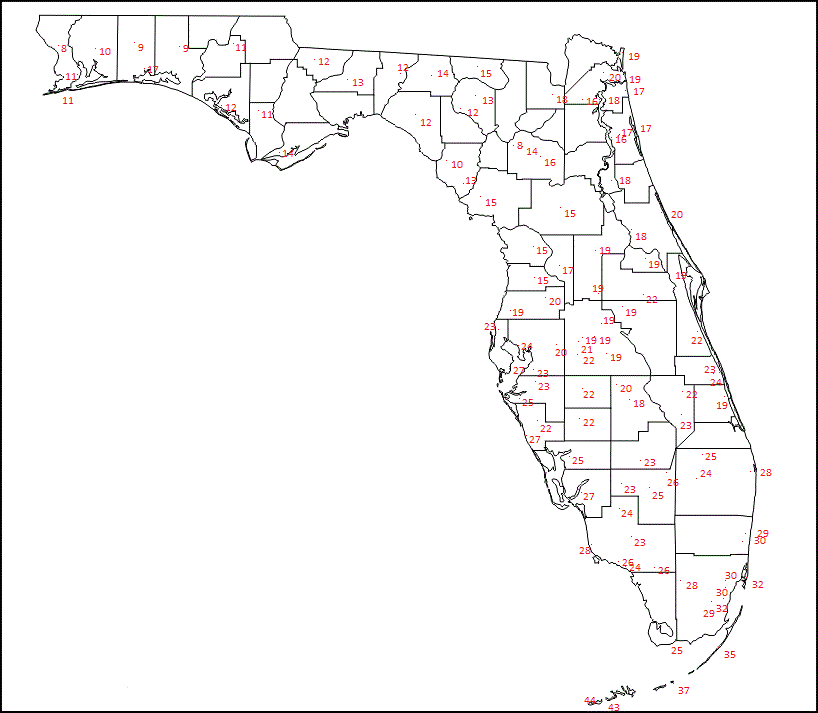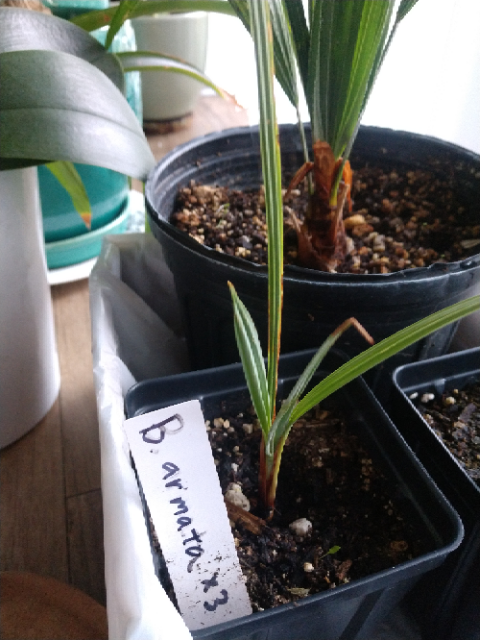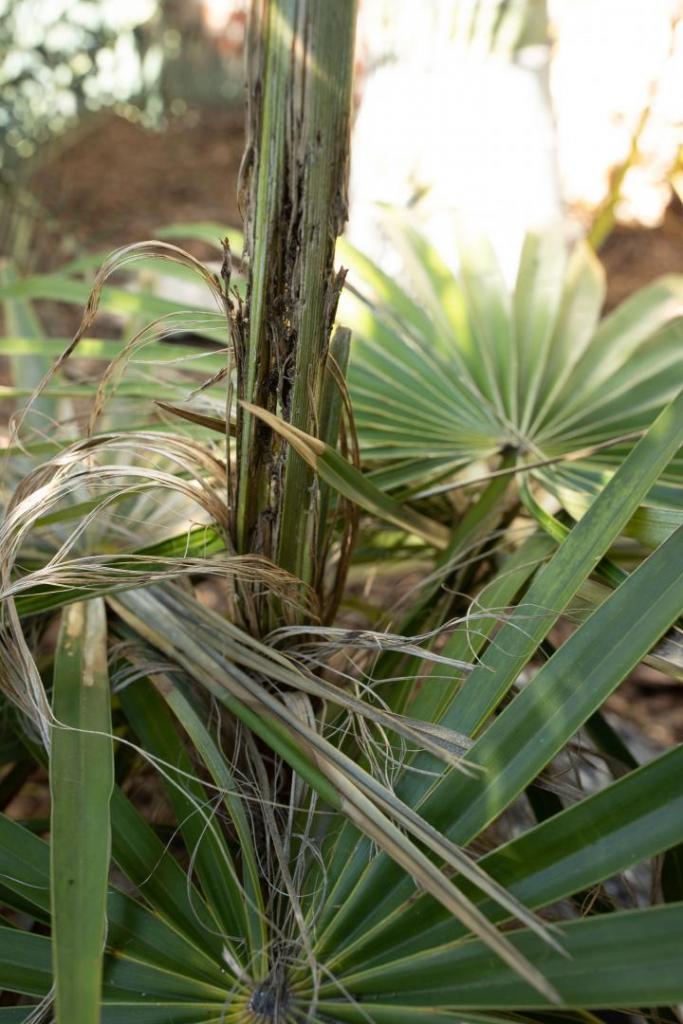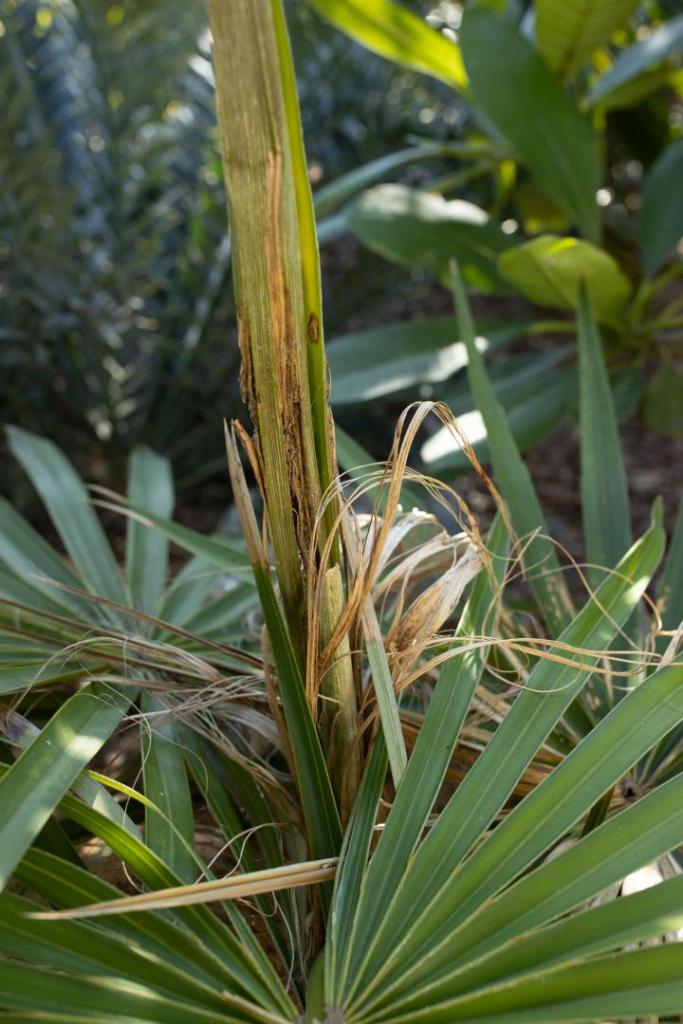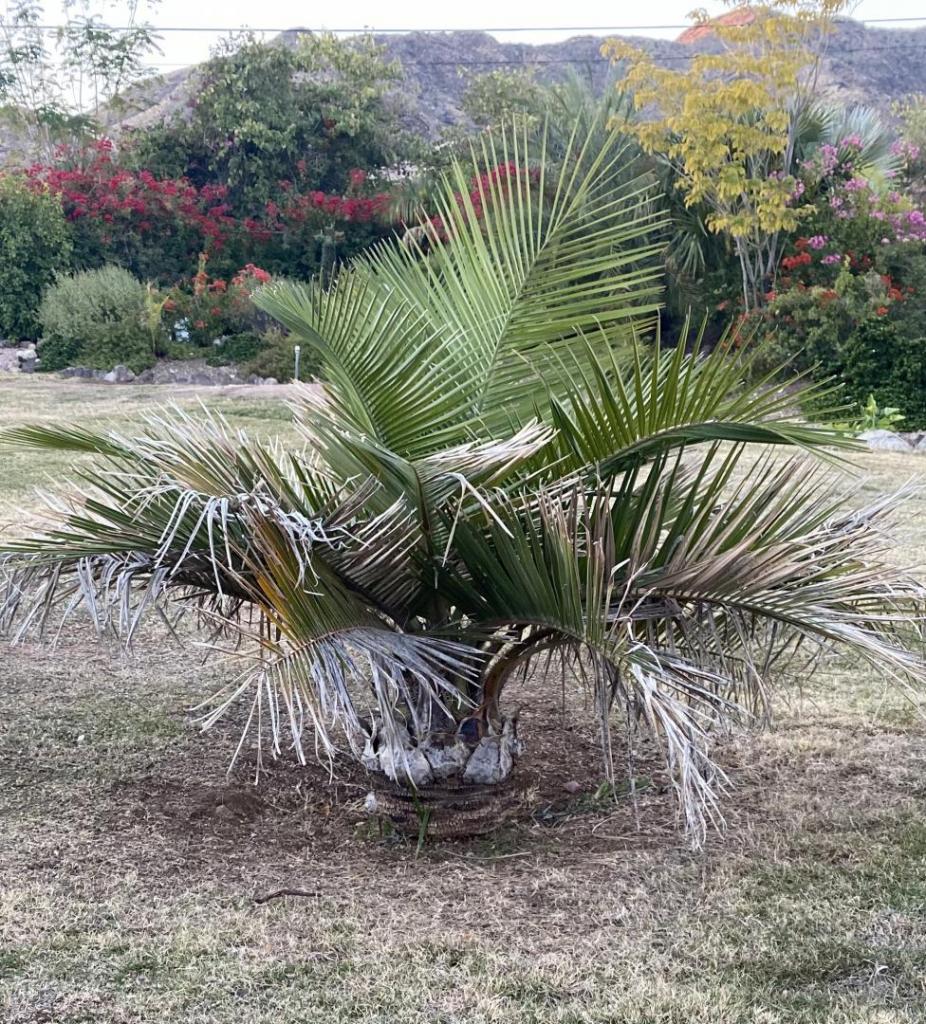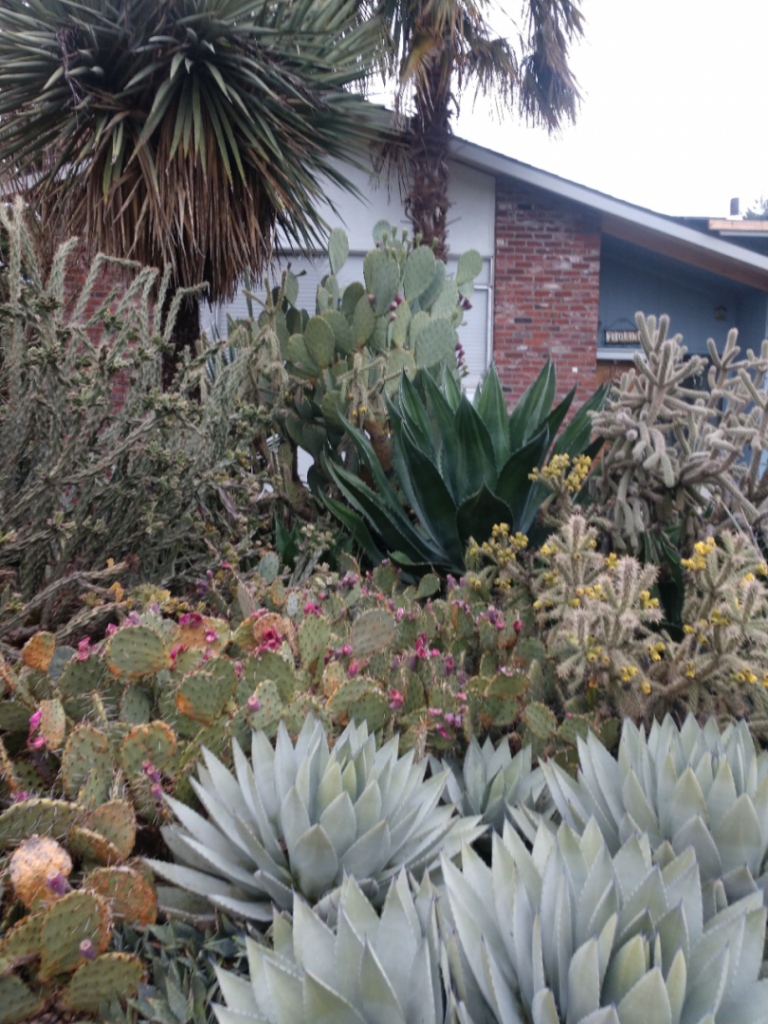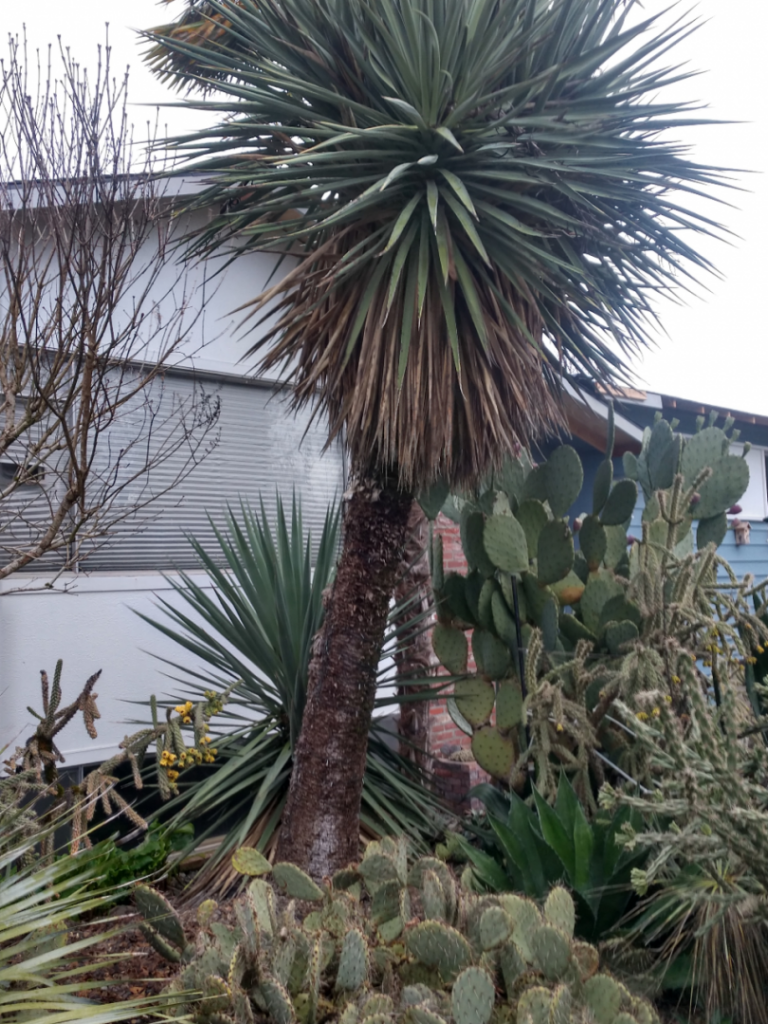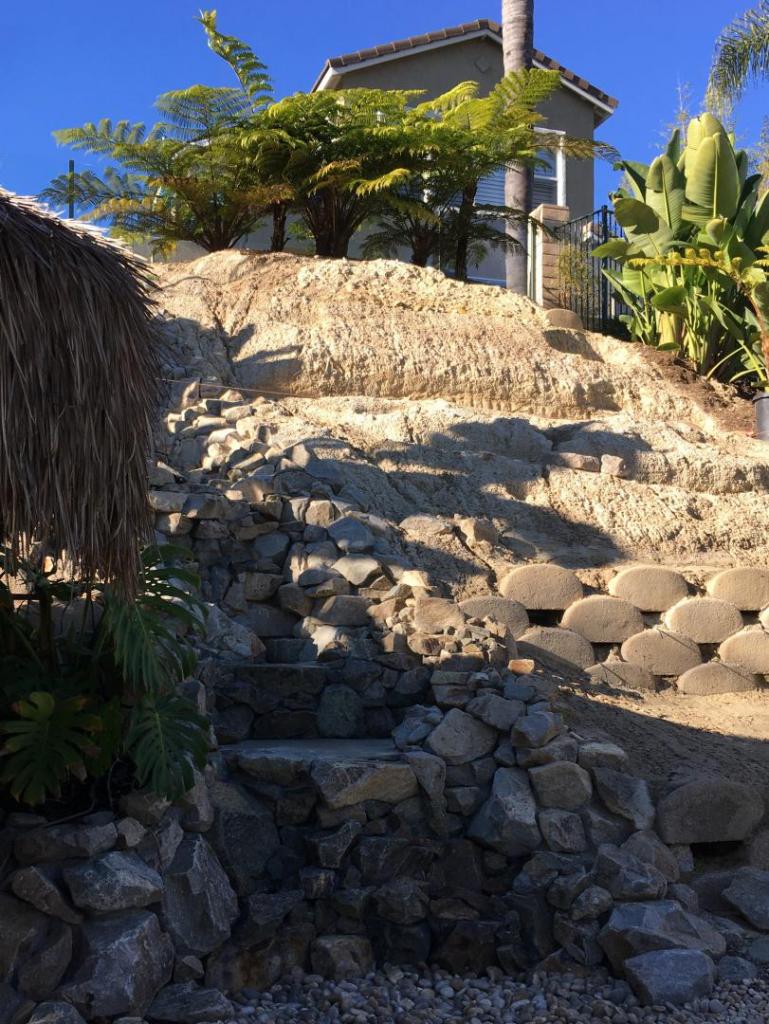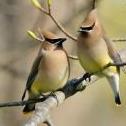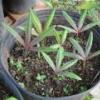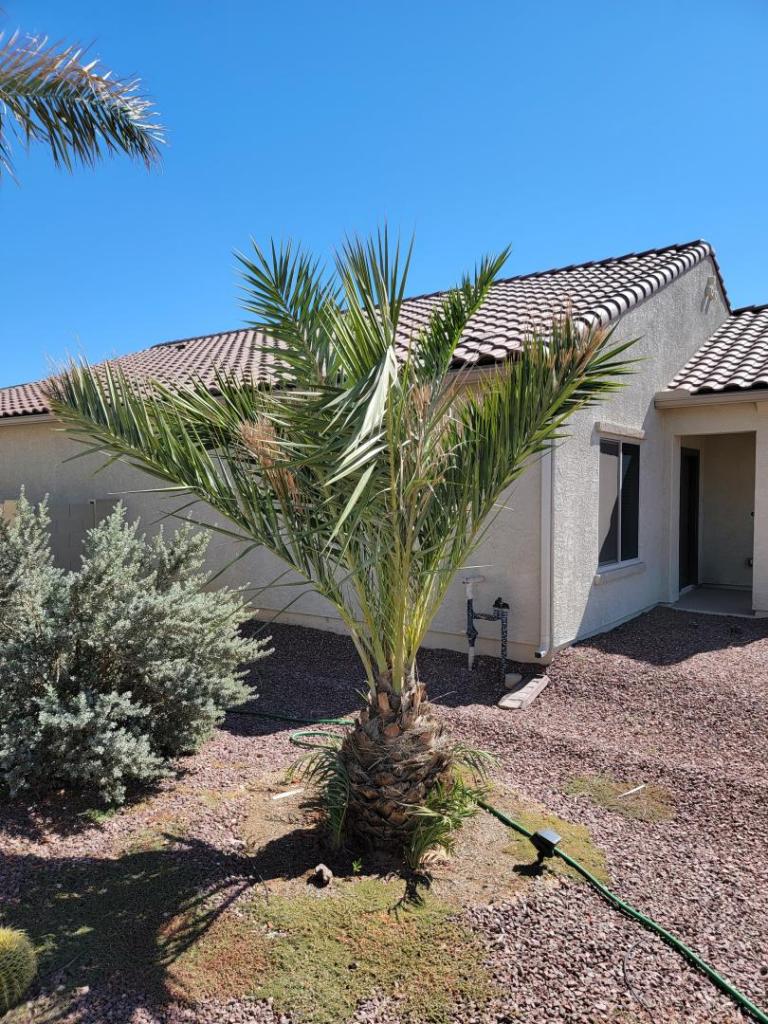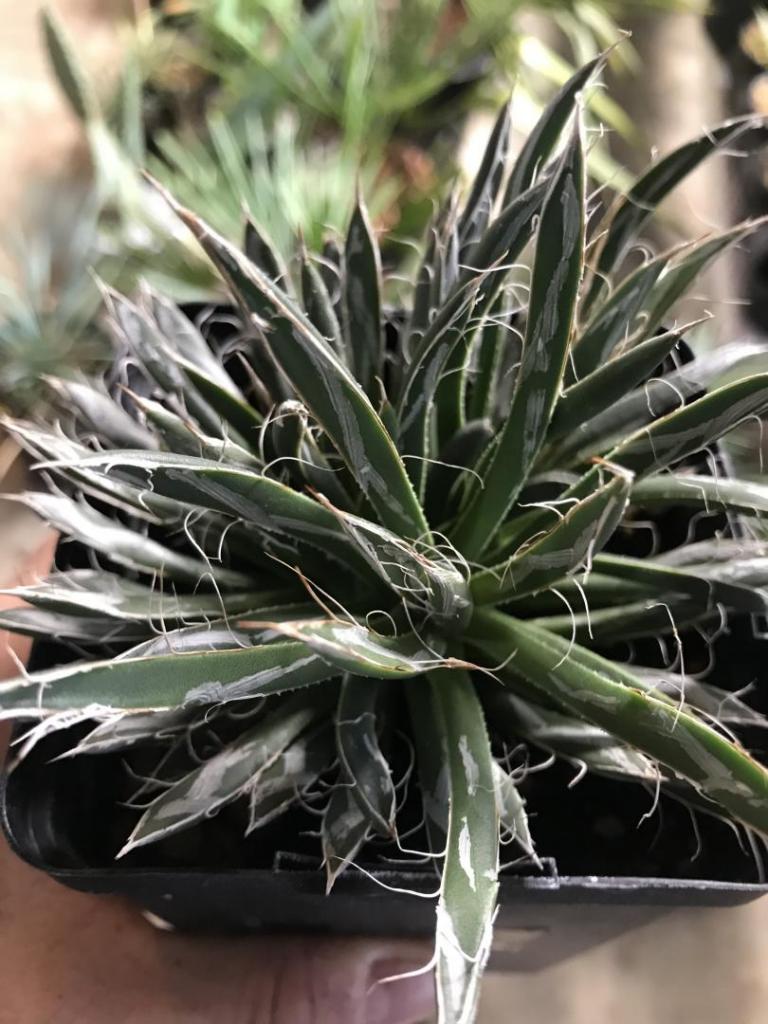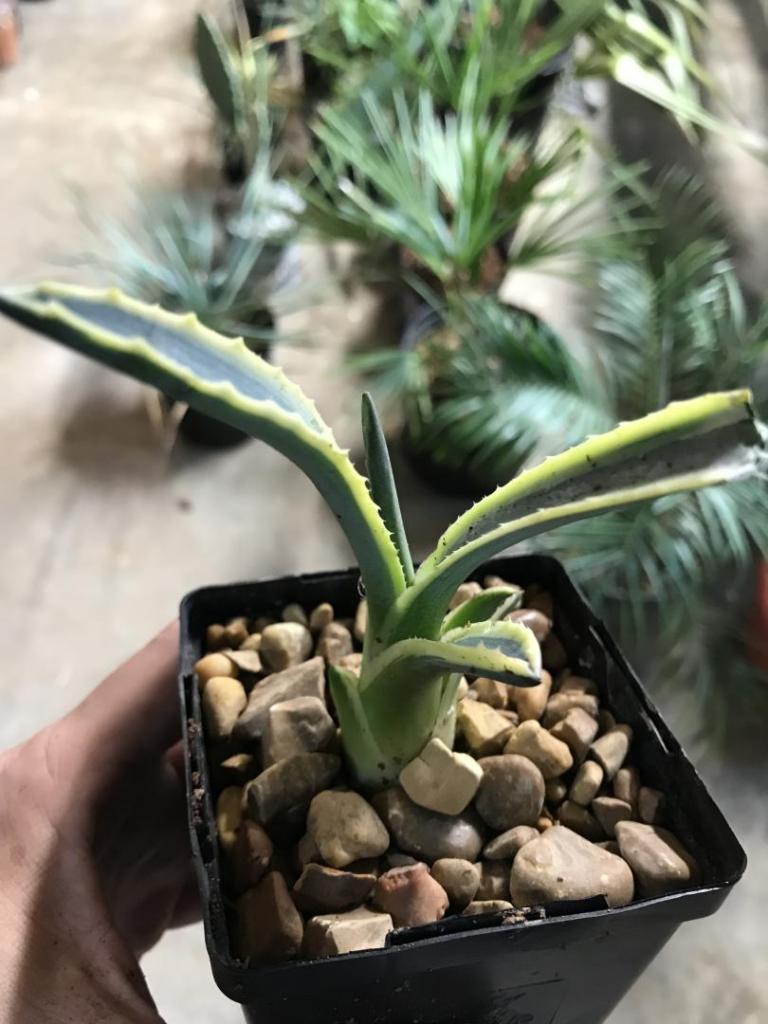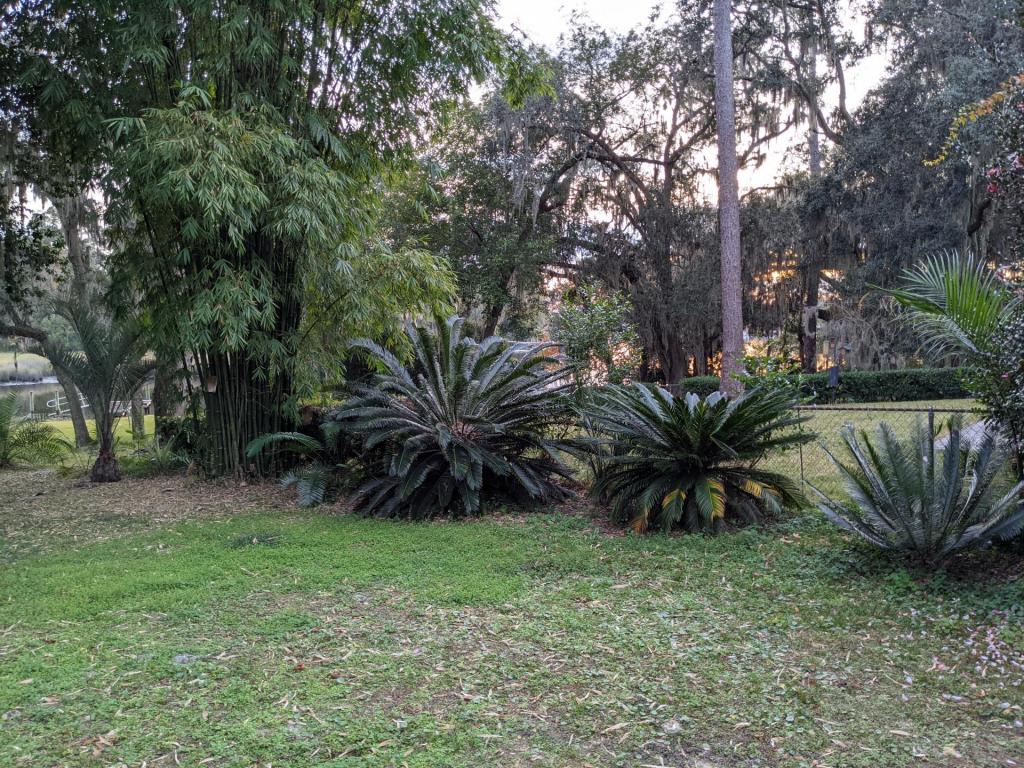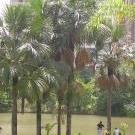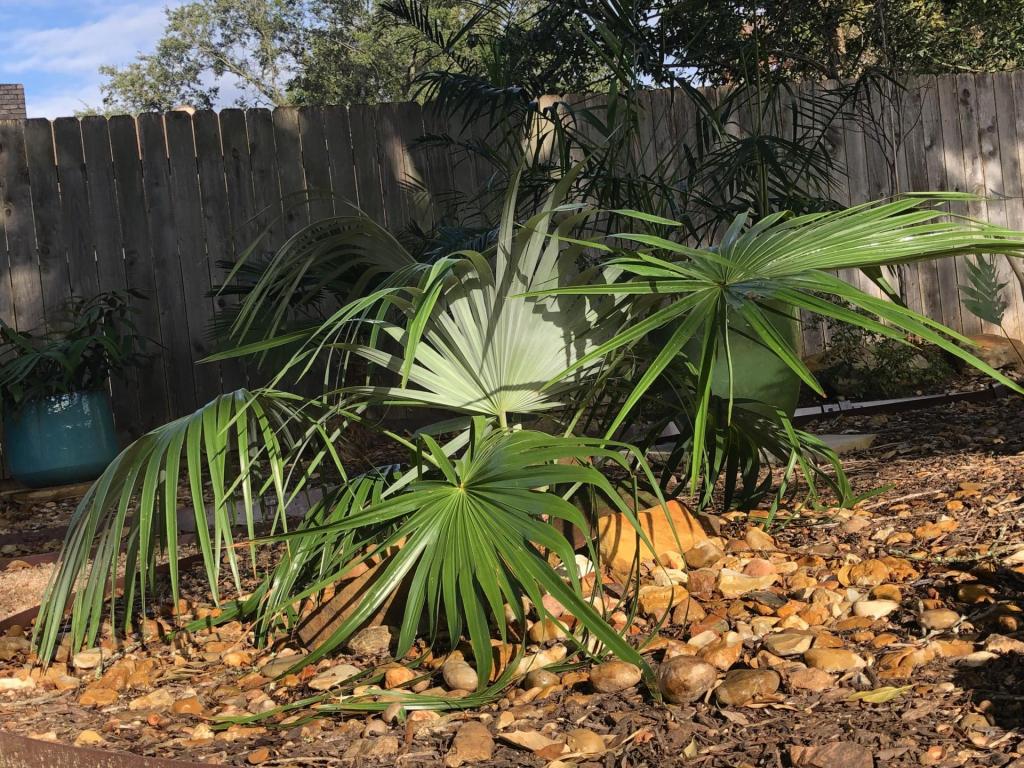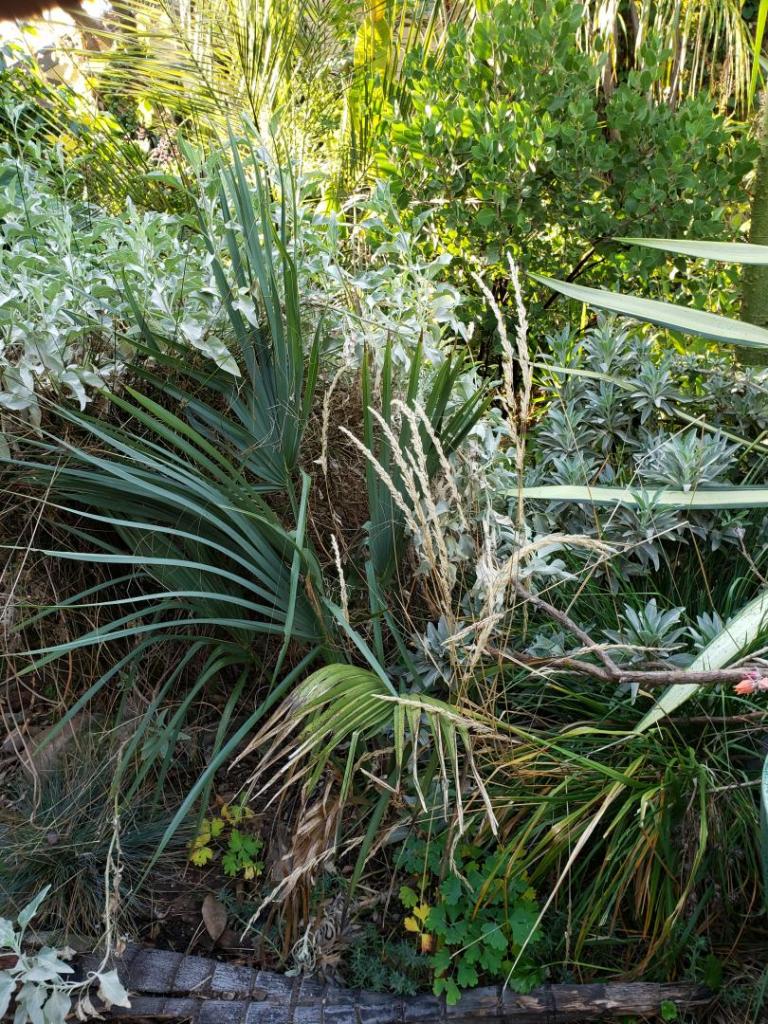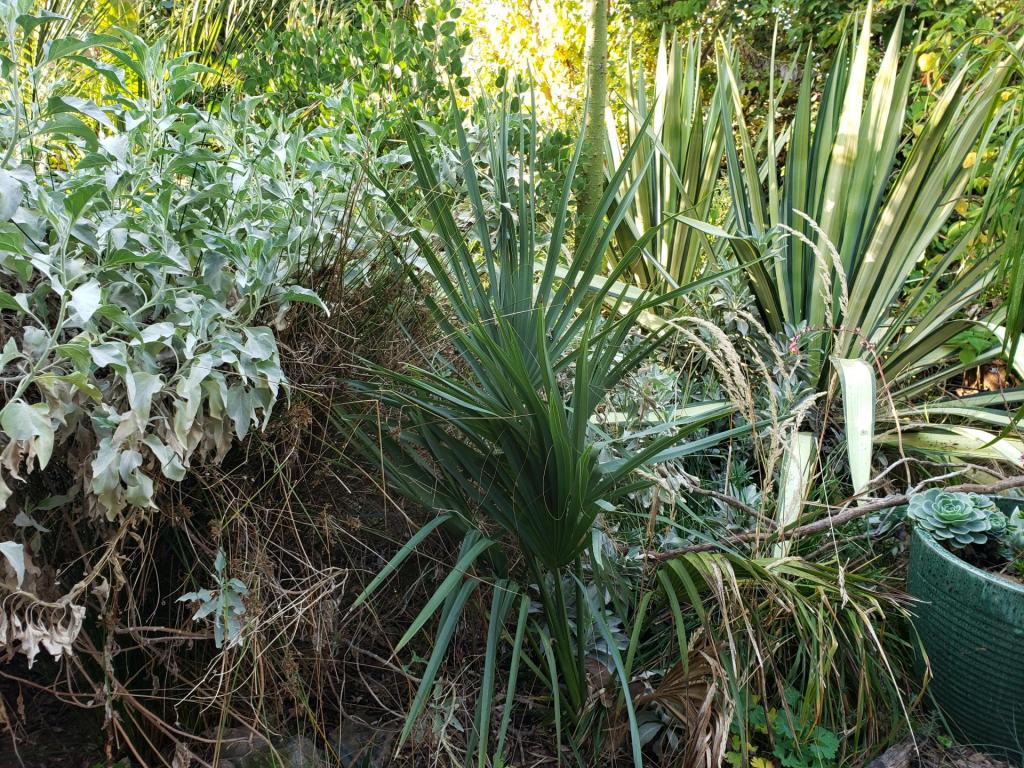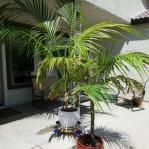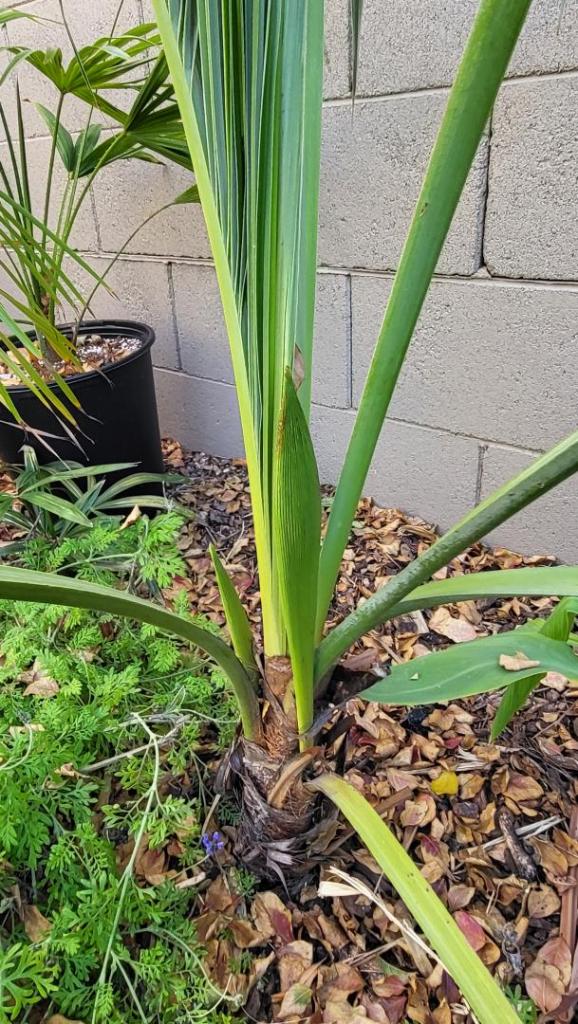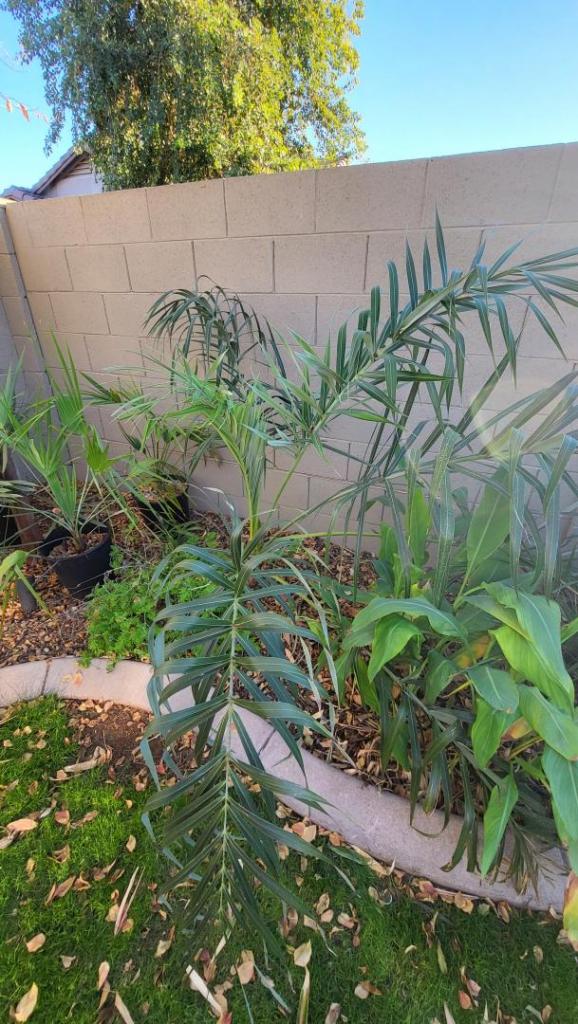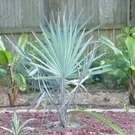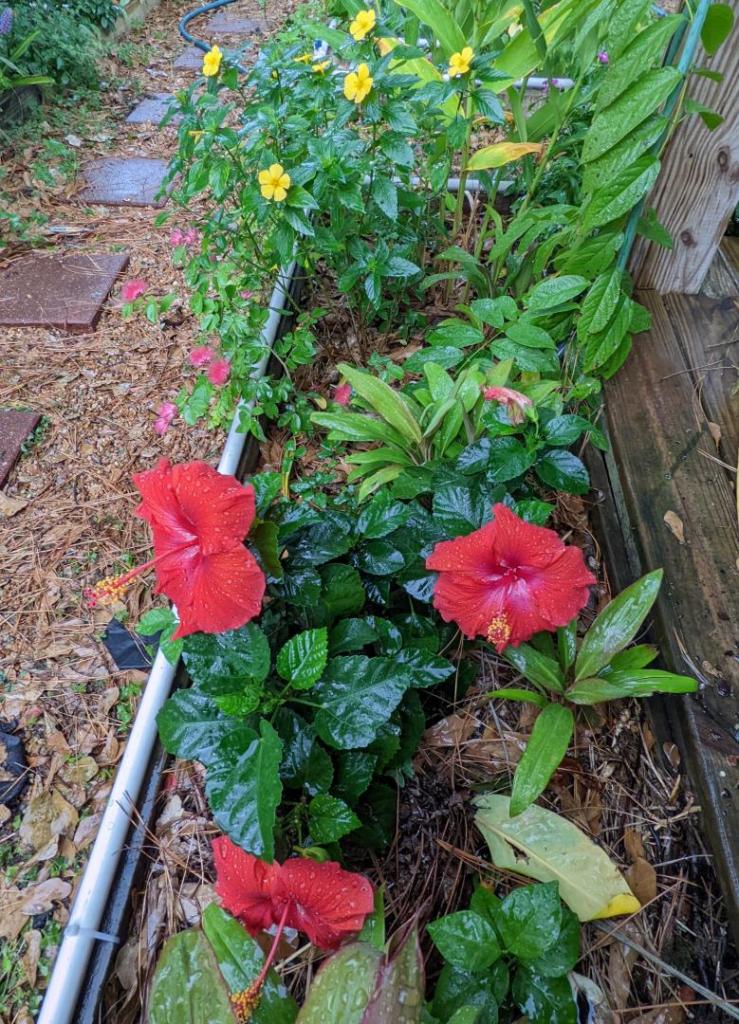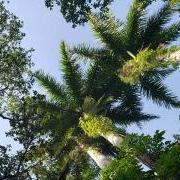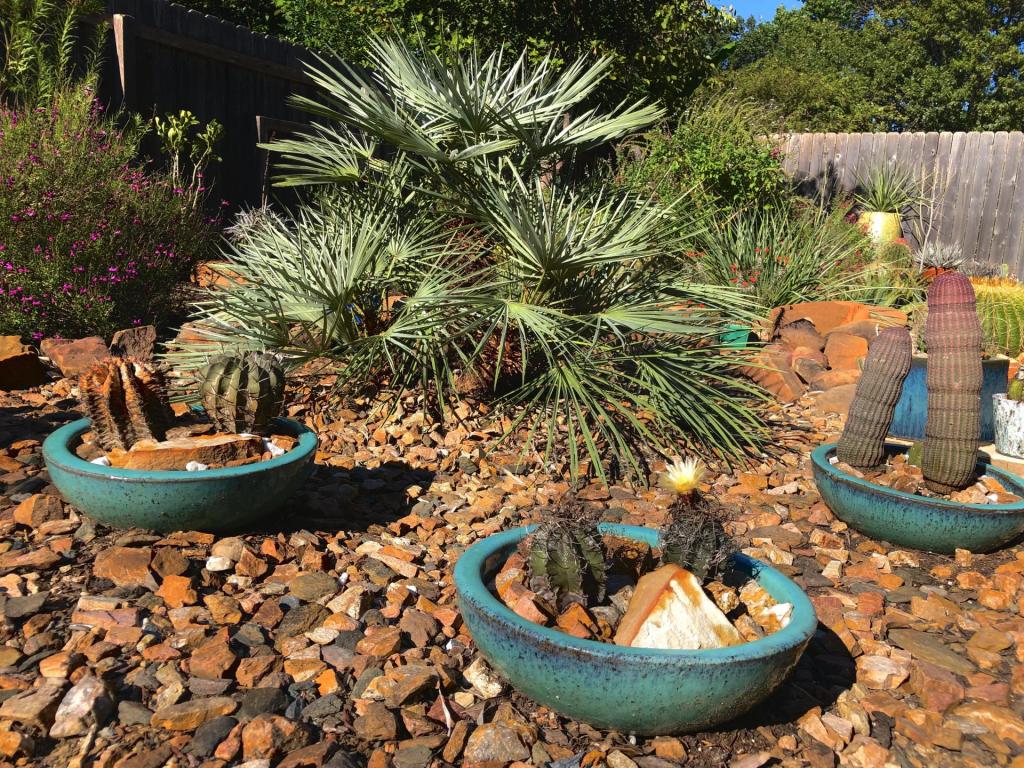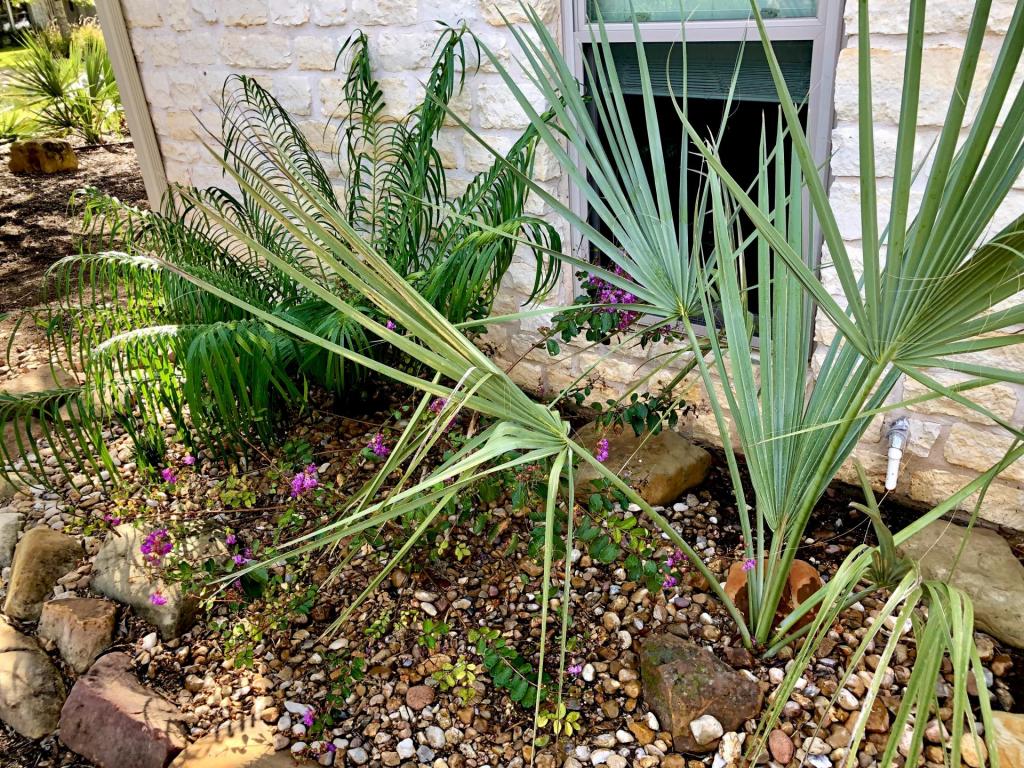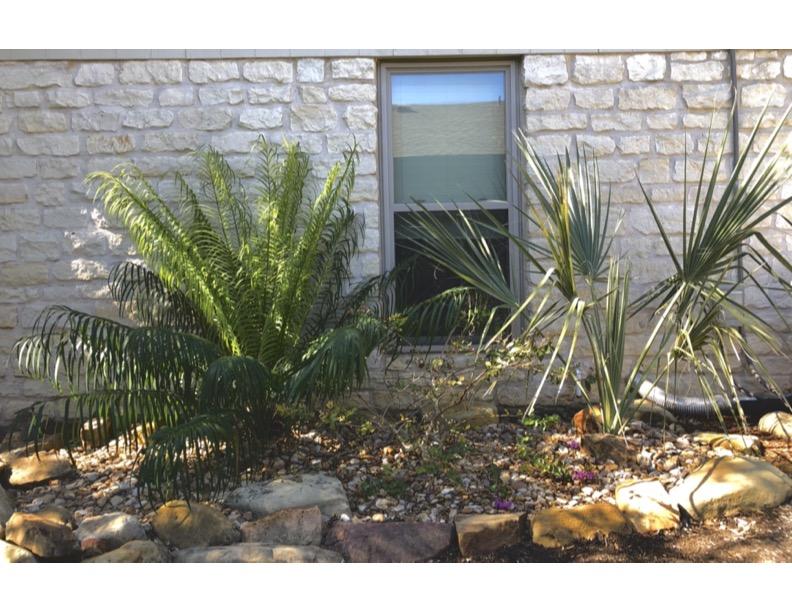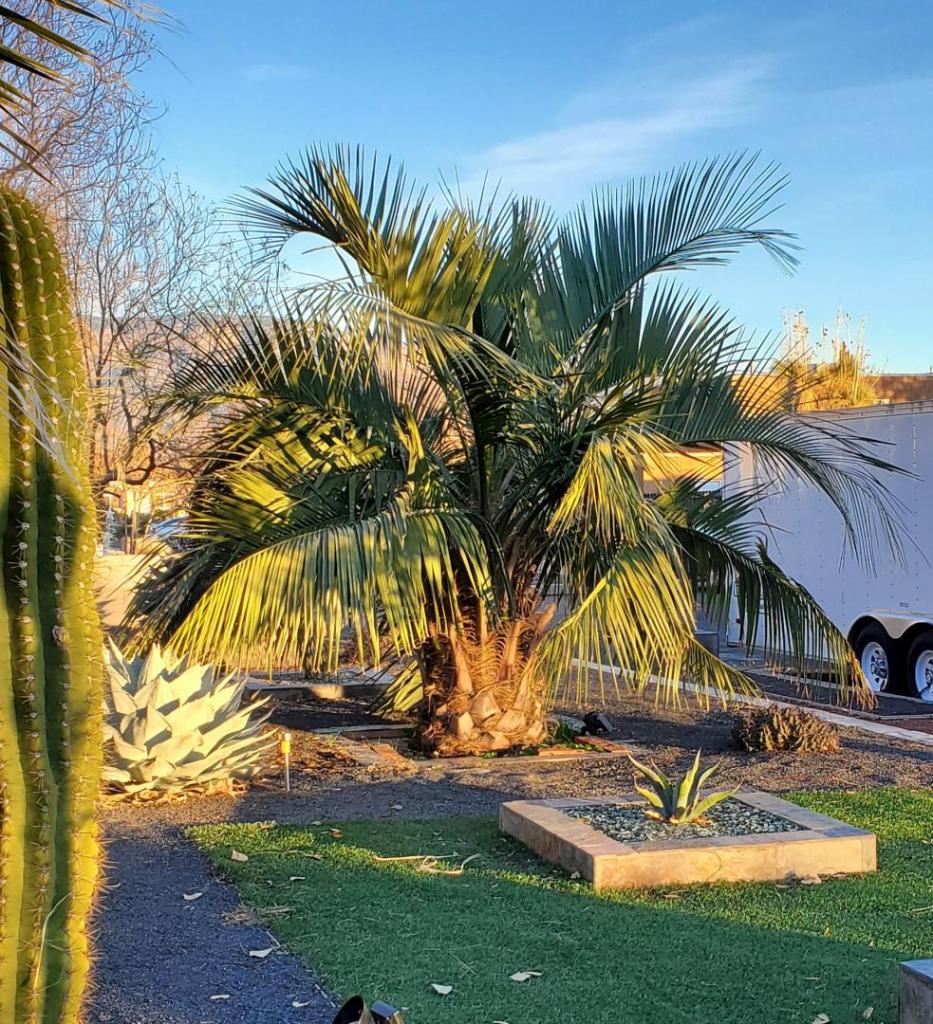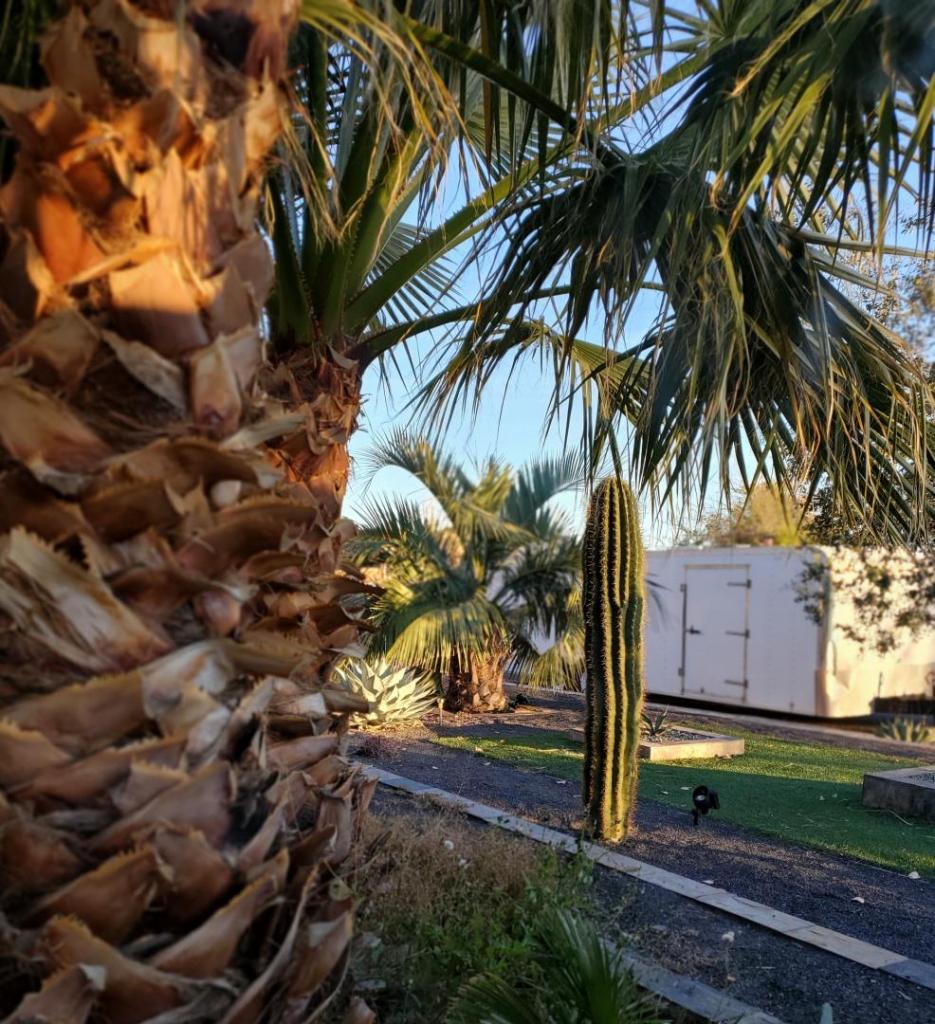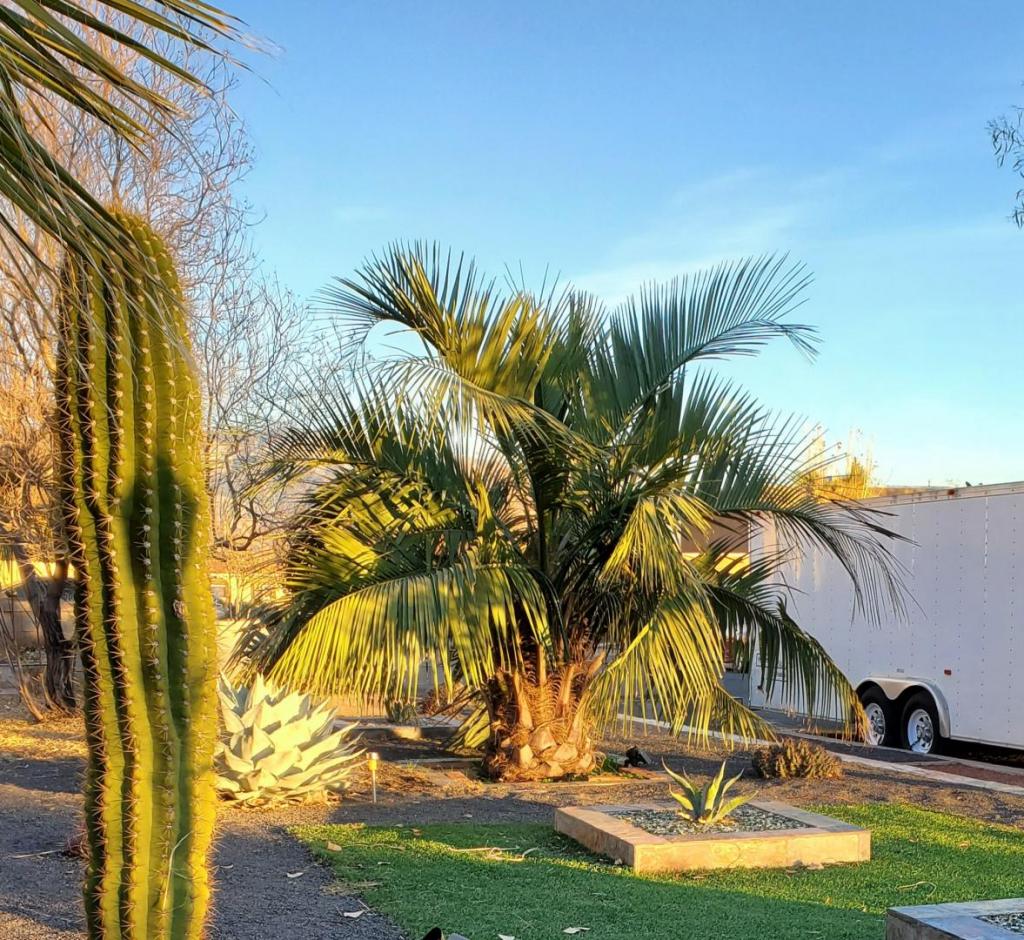Leaderboard
Popular Content
Showing content with the highest reputation on 12/19/2021 in all areas
-
A few pics of my front yard, focusing on a couple palms (Butia capitata, Trachycarpus fortunei), + large yuccas, large agaves. The agaves are about as tall as I am, the yuccas mostly taller lol. The front garden view shows trunks of tall T. fortunei and a large Yucca schottii in background, with blue Agave parryi in front, and A. salmiana var. ferox behind (large, dark green).9 points
-
4 points
-
I think it's important to mention that our perspective is different from reality. It might be 40 at 5 feet above the surface of the ground, but where that baby coconut is sprouting it could be in the middle 30s. Not a lot of mixing on cool, still winter mornings and nights. Also, your yard could very well be it's own microclimate, and that's great. But that isn't representative of all of Golden Gate. And it is true that it has been very mild these past few years in South Florida. Is it bc of global warming? increased urbanization? Just random stagnant weather patterns? A combination of all of that? Who knows. But the bottom line in, the winter in Florida is variable and even if our averages bump up somewhat dramatically, we will still be exposed to the extreme outlier cold fronts.3 points
-
In Socal it's all about elevation. The desert and valley floor are always where cool air pools. The foothills, a mere few hundred feet up, are always much warmer on calm, cool to cold nights. Urban LA sees light scattered frost most winters on rooftops or car surfaces out in the open. Usually, the civic center in DTLA is the warmest spot so the 35 number you saw there shocked me...usually downtown LA gets to the upper 30s at the colded, same for LAX. The surrounding neighborhoods cool off to the mid or low 30s in times like this. It is similar to SoFlo, they get in a warm dry or cool and wet pattern, while the other half of the country sees the opposite. Trust me, people in Socal are complaining about the cool weather. Usually Santa Ana winds kick in and warm the area up dramatically. But on average, there are several day stretches in the 60s/40s in LA, moreso than in SoFlo.3 points
-
If you are in 9a, then all of these are questionable even the royal. Yes there are a couple royals growing in Jacks but based on more knowledgeable people on here, it’s likely due to a nice microclimate. No harm in trying though.3 points
-
3 points
-
A short answer, yes. The Outside Garden section of the store does function as a draw to get customers in the store, but depending on the time of the year it may also be the most profitable department. Different plants and items had different profit margins. Some of the palms and other foliage plants near the back of the department may not have as much profit as compared to the 6-inch flowering orchid that is priced up a lot and placed right near the entrance. The fertilizer and associated items, sprinklers, hoses, rock, stones, etc. have some of the bigger margins. One could look at it as... the plants are priced the leave the store, but customers buy the higher profit associated items 'they need' to go with the plants. At different times of the year, my OG department would crush sales, so much so we would get a visit from the district manager. Then during heavy rainy periods and hurricane threats, the department becomes a big void of just cleaning, inventory and chasing smokers away from the pool chemicals before they blew up the store. Ryan3 points
-
Darold is correct. When I was at Lowes, the plants were 'pay per scan' meaning the store took their share and the supplier gets the rest the moment the plant is bought in store. Not every plant may be supplied in this way, as a minority are sometimes bought outright and sold. So as for the large nursery suppliers, if a plant dies, the loss is on them and not the store. The system can be equated to being 'on consignment'. Prices can be low due to competition between chains. Each store can and may be run slightly different in the Lowes world, as the plants vary so much based on location, climate, season, etc. We had the option of buying plants directly if it was a good idea, involving local growers for a local plant that was a good buy at the time. We had a bit of independence in selecting the plants, as the regional suppliers for the store often had no clue as to what to send us in S. Florida. (We got Apple Trees, Fir Trees, temperate stuff, etc. now and then) not to mention the occasional snow blower and box of ice scrapers. Ryan3 points
-
I grow Cyathea australis, Cyathea medularis and Sadleria cyathoides, I plan to post images soon. (super busy right now)3 points
-
3 points
-
2 points
-
While holed up for winter, I'm accumulating some small palms for future plantings... have quite a few that arrived recently. Seedlings up to 3 gallon pots. Just sharing baby pics lol. Apologize in advance for some having low pixel density; had to take pics on phone and email them, server only allows a certain amount of data per email, limiting picture density/quality. But the plants are visible enough... happy growing! Pics include 2 B. armatas, N. ritchiana (love how silver it is, even as a seedling), and Washingtonia filibusta hybrid.2 points
-
I have been watching this spear emerge and the damage has become more readily visible as it gets closer to trying to open the new leaf blade. I don't know what did this and the blade that split off from it and is still not visible in this photo appears to be normal. The one thing that does have me concerned is that it isn't far away from a Copernicia x Textilis that I have had similar problems with over the last few years. The Copernicia will push some normal fronds then push out a series of damaged ones almost every year of the last 4-5 years.2 points
-
2 points
-
His were the “highlands” blue/silver form, but the seed were not from John Fairey Garden. Obviously this species is variable and I read one claim his weren’t quite as hardy. That could depend on size, location etc. but it seems most Uresana survived last February regardless of form or if they burned or not.2 points
-
I'm impressed! In full all day Phoenix sun,that's exactly what I figure these will look like here. Maybe a little more water would keep it greener,but it looks great to me. We actually can grow over a hundred different palms here;some, unfortunately,just not to perfection. I've already sold about 25 of these in 5 gallon size to various individuals around the valley,so hopefully there will be a few more growing up for future generations to enjoy. aztropic Mesa,Arizona2 points
-
I never keep track of when I plant things because I never knew there was such a thing as palm talk I thought I was the only crazy person in Arizona it was planted from a 5 gal I very rarely plant anything bigger because it takes to long to dig a hole in rock2 points
-
2 points
-
2 points
-
Tracy, I use the standard wire wheel brush and cordless drill for small Chamaedorea seeds, no problem. Put about 4 inches of water in a 5-gallon plastic bucket, tip the bucket at an angle and keep the wheel edge at the corner of the bucket wall and bottom, rotate both directions, pour off most of the water and epicarp matter carefully as the seeds remain at the bottom, repeat several times. I would have no reservations about Dypsis seeds.2 points
-
YW! I'm on a corner lot; I heard that neighbor kids used to cut across the front yard to save time. Not any more... ;-)2 points
-
2 points
-
Chester, here ya go! :-) Yucca schottii and Trachycarpus fortunei in background 1st pic (Agave parryi in foreground and A. salmiana ferox further back/dark green), with various prickly pears & chollas. 2nd pic: Yucca schottii large trunk, with offset 2nd trunk at left base... Trachy trunk peeking out behind and to right. For frame of reference, large dark green Agave salmiana is about 5 feet tall and wide.2 points
-
They make different grades of wire wheels, so maybe a softer bristle might work better, and maybe on a slower speed.2 points
-
Yes I was told exactly that by the supervisor at my local HD last week. That’s why they can never mark stuff down like when a plant gets damaged or doesn’t look great. They just leave it for the grower to take back.2 points
-
Thought you'd get a kick out of our strategic fern placement. Our hill is under construction, with most of the new plants going in this Spring. But we took a moment two Springs ago to plant some Australian Tree ferns at the top of the hill. We prioritized those plants after we learned that the home above us was being sold... wanted to get them in before the new neighbors moved in, so as not to offend. Hoping they'll grow REALLY tall, then we can put a second layer of ferns (or something else) beneath them. We still need something tall for the right corner (open to suggestions... ideally something in a color other than medium green). The front three ferns are the "rough" version (Cyathea australis), with the center one splitting into a double. Then there are two "lacy" (Cyathea cooperi) ones behind those. We were a little worried about them getting so much sun (they're in direct sun in this photo, but are in shade part of the day). Not the best placement, but they've done pretty well over both summers... as long as we give them lots of water. Hoping they'll provide some needed privacy, and help set a tropical mood. Many more tropical plants to come soon (you won't see any of the "bricks" a year from now).2 points
-
oh trust me, I have no plans to put in a tree to dig up 10 years later. It's staying in the ground and will be winterized no matter how big it gets. That being said, I wouldn't put trees in that are zones 9 or above so that's why I am not planting any queens or coconuts or anything to that extent. Winterizing a zone 7 or even 8 b in 6a is one thing, but winterizing a 9b or 10 in a zone 6a is a huge risk. Green Dragan is in my area and he 's doing just fine 30 years on of planting palms and he's a little colder than me in zone 5b. He built huge tall glass enclosures for his palms and invested quite a bit of money. He's has no queens or coconuts or Royal palms. But he does have Washys and Trachys and Chinese fan palms and Pindos and he's still protecting them in his custom made glass enclosures decades on. Only ones I would plant are Washys, Trachys, Mules, and Pindos. But I only have plans to plant just two trees. My yard will not be filled with trees that leave me racing around in 15 years to winterize. I will have two and at the most three, so no matter how tall they get they will be winter protected and heated. And considering my brother in law works in and runs a construction company, no the scaffolding and scissor lifts will not be an issue.2 points
-
Looking at the first pic again, I noticed that there is some keeling to the leaves. Looking in POM (not easy to read the botanical descriptions there), I find mention of keeling in three species: julietiae, glauca, and xerophylla. So I went out and looked at some of my Raveneas. Here is madagascariensis, which also has keeled leaves: Orange bucket is 5-gal. Then I looked at sambiranensis, which also has keeled (and very arching) leaves: Then I looked at one of my glaucas. The leaves are NOT keeled. But then, aren't there two species named glauca? Here is a pic: Finally, a Ravenea species that has received some mention here is krociana. Here is a pic of my sole survivor: Even here, the leaves do look a little keeled. But these massive leaves are entirely different from the first pic in this topic. My julietiae, unfortunately, didn't make it, so I can't help there. The one I have that seems to me to be most like the first pic is madagascariensis. The leaves on my lakatras are flat, so picture one is not that species. Not xerophylla either, because that is bluish and way different. I need to mention that many of my ID's are of seeds purchased from RPS, and could be incorrect, since RPS is dependent on field ID's from local people. Other ID's are from Floribunda purchases. But Floribunda gets many of their seed batches from RPS, so the problem is the same. This was a fun topic. thanks Tracy for starting it.2 points
-
2 points
-
@Acheron800 Welcome to Palm Talk! You received some beautiful specimen date palms. Who did you end up purchasing them from? How long was water sitting in the holes for? A few hours? A few days? On watering schedule it's dependent on the weather. Now that we are entering "winter" palms require less watering during this time of the year. As spring and summer approach you will adjust and up your watering. For example here in AZ where I'm at we have wet winters. It has rained twice this month already. So I will not need to water my palms unless we dont receieve anymore rain this month, January or February. But in the summer where im at I water my palms once a week with deep/long waterings. I only do once a week in the summer because my soil is heavy clay and doesn't drain as well. I've had my palms for about 2 years now and they seem to enjoy my schedule I have for them. The most important thing is to spend time with your plants. It sounds crazy but the more you pay attention to them you can start to notice little changes. I would wait to fertilize until next year(April/May), allow your palms to establish themselves a bit. You don't want to fertilize them now and seriously damage or kill your palms. Clay soil is tricky, it may look dry on the surface but 1-2 feet down it could still be wet. But since yours is a mix the best thing to do is just test with your finger or screwdriver. The outer fronds will dry up as the palm is putting effort into the roots. Don't be too concerned if that happens, but if the browning doesn't stop you could have a serious issue. As far as leaving them tied up, I would say leave them until spring. This will protect the growth point from the weather. You can also pull out the gravel to check the moisture deep down if that helps. Hopefully someone else can jump in and answer some more of your questions or offer great advice! Here is a picture of my date palm that has been in the ground over a year and a half now. It was a transplant and has grown incredibly fast. Best of luck with your palms!2 points
-
2 points
-
Yeah, I have a large male that I use for making my own hybrids. As for looks, when smaller yes they have a similar look, but once it puts on size it outgrows revoluta in width. And yes, much faster growing and more cold hardy. Taitungensis also has much flatter leaves than revoluta. The one on the left is taitungensis, the middle revoluta, on the right panzhihuaensis. Taitungensis was a 4" caudex plant when originally planted, revoluta had about a foot of trunk.2 points
-
2 points
-
2 points
-
2 points
-
Jubeas are massive palms that have some of the most attractive leaves of all palms. They take a long time to grow big so they sell the juveniles in small pots:2 points
-
Allagoptera arenaria appears to be a solid grower here in Phoenix. It's flowering for the first time. This one gets full sun in summer and full shade in winter (in front of a north facing wall). I can't wait to see the fruit. They look like little pineapples! If I do get some seeds I'll be trying to germinate more.1 point
-
Dypsis Cabadae seems to be similar to Lutescens in cold hardiness, i.e. severely damaged by frost and temps in the upper 20s. I am trying it here in the Sanford area, borderline 9b/9a. If you get into the low 20s on a regular basis then it'll get killed to the ground...and might regrow. I am also trying Ptychosperma Macarthurii here, and it did ok at 28F and frost last year as a 2' tall clump. But it may have been protected from frost by nearby Philodendron and a 12-15' tall Asian Lemon bamboo. It's probably also a "burn to the ground" type in the low 20s, and significant damage below 28.1 point
-
The Super Mules?! They come from Frank and Elaine Lewis At Moultrie palms in Florida… St. Augustine I believe. They have created their signature “Super Mule” that is (BxJ)xB)xQ or (JxB)xB)xQ) don’t remember which. And they are Dr. Wilcox genetics which seem to be a very respected source. They claim to be superior hardiness to the XButigrus mule (BxQ). Some say that’s up for debate but they look great and the “hybrid math” adds up to a pretty hardy specimen. And Elaine was so nice, multiple calls back very polite and helpful. Frank went to deliver them to me in a storm... their last shipment until after the first. As far as the palms they come tomorrow and time will tell. But the experience with Moultrie was 5/5 would highly recommend them. Check out their website Moultriepalms.com. I’ll get two more after they begin shipping again.1 point
-
That makes sense. I haven’t frequented mine as much lately because I have a lot of plants to unload. Maybe mine has lost some variety too, wouldn’t be surprised1 point
-
Here it's the same old same old. Usually we'd be getting large storm fronts 100 - 200 kms wide moving up from the Arnhem Land Plateau to the south east. These 'd reach the north west coast late afternoon or evening. There'd also be the Gulf Lines moving in from the Gulf of Carpentaria reaching the west coast often during the night. But all there's been are occasional small isolated storms which produce very little rain for very few places. This morning 5am it was 27 and "feel like temperature" was 33.1. It's been the same for the past several weeks. Daytimes it's in the high 30's with the occasional drop to the mid 30's when some bits of storms move through. We're two and a half months into the wet season, just wish the wet season would start.1 point
-
1 point
-
January 18, 2018 WU screenshots in this thread, all of golden gate (north or east of 75) is 36 or below. Do you live by the airport or do you live in Golden gate? Naples is considerably warmer, being just a few extra miles inland can make a big difference as this event shows. I would consider Naples proper probably 10b, and Golden Gate 10a. Again you have to consider a longer timeframe than just the past few years.1 point
-
1 point
-
1 point
-
1 point
-
1 point
-
Looks good! Mine also added 4 leaves and pushing a fifth. It's easy to count the undamaged fronds after 9°F temperatures in mid-February! Same growth results from my slightly larger Sabal guatemalensis. Your JxB looks awesome as well!1 point
-
1 point
-
I can state with confidence that it should handle full sun to 110˚. Mine are from 4 sources, and can stand lows in the low 20s without damage. Hi 100˚, Lo 68˚1 point



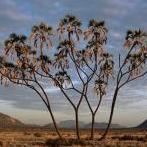
PindoPalm.thumb.jpg.c675e462593c5294e5378dd54a381cbb.jpg)
